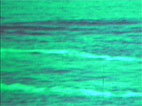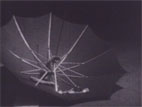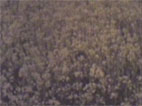Early Film Poems 1962-1971
- Takahiko Iimura |
- 1962-1971 |
- 44 minutes |
- COLOR/B&W |
- SOUND
I made these six short films during a decade of 1962 through 1971, the first 10 years of my filmmaking though the order in the DVD goes backward from 1971 to 1962. Besides this collection I have already published another package of the films made in the 1960 "60s Experiments" consisted of four films made during 1962-64. The films of this new collection have not shown much during past decades and myself re-discovered lately these ones as a sort of "film poem." "Film poem" is a term used in the 1960 for experimental film burrowing from literature field. It means non-narrative and short form mostly. Also it often meant lyrical as well though not
necessarily so. In this collection it starts from lyrical "The Pacific Ocean"(1971) and ends up not lyrical, "DADA62" which is descriptive and often metaphorical at the same time. Between them
there are varied sense of poem.(T.I)
Iro (Colors) (1962) 10 min.
First projected onto Jiro Takamatsu's naked back at the legendary Sogetsu Art Center for
the performance Screen Play, Colors is an experiment in concoction. Iimura drops paint into
oil and water and melts wax as he films the colors take shape whilst simultaneously
dissolving into one another. An eerie soundtrack by Yasunao Tone of Group Ongaku and
Fluxus creates an impression of music being the witch behind the craft.(Julian.Ross,
University of Reeds)
Dada 62 (1962)
Yomiuri Independent was an annual show between 1949-1963 that exhibited all art that
was submitted. Artists in the early 60s began to take advantage of the challenge by provoking
the organisers with their submissions that cast a question on the framework of art within
the gallery space. The objet d'art and performances we see in Dada 62 are fragments of what
was shown in its 1962 version with pieces by Genpei Akasegawa, Jiro Takamatsu and
Shinmei Kojima making an appearance.(In case of the performance in 1963, Iimura
interpreted a graphic score by Yasunao Tone in his projection of the film at the Naiqua
Gallery where he performed the projector as an instrument. As usual for Iimura, the piece
is not simply a document but an interaction with the art he films.)(Julian.Ross, University
of Reeds)




